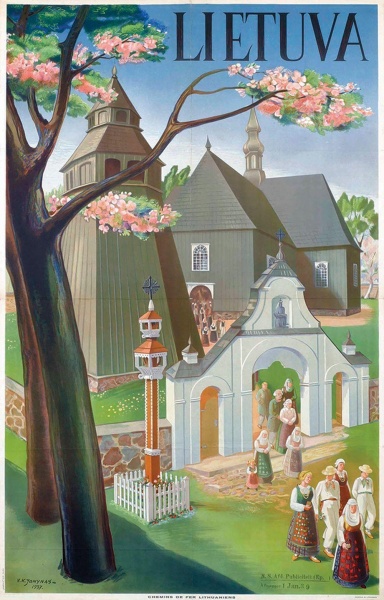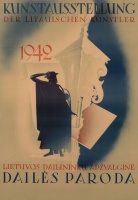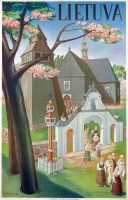

Poster ‘Lithuania’
| Author: |
Vytautas Kazimieras Jonynas (1907–1997) |
| Created: | 1937 |
| Material: | paper |
| Technique: | colour printing |
| Dimensions: | 100 × 64 cm |
| Signature: | bottom left: V. K. JONYNAS - / 1937. |
What was the image of interwar Lithuania that corresponded with the official ideology and met the expectations of most of society? How was it reflected in works of art? After Lithuania lost its historic capital, the centre of politics, culture and urban progress was Kaunas. The image of the emerging interim capital, and that of the country itself, had to be built up from scratch, and was based on two main ideas.
On one hand, the country was epitomised by symbols of the past, such as traditional crafts, folk architecture, and other aspects of the national heritage. The poster Lithuania, designed by Vytautas Kazimieras Jonynas (1907–1997) for the Ministry of Transport, is a typical example. It won a gold medal at the International Exposition of Art and Technology in Modern Life in Paris in 1937. Jonynas’ rather sentimental and utopian image of Lithuania can be seen as an example of propaganda. The idyll of a small town was intended to represent the country, and attract foreign tourists. Lithuanians hoped to catch visitors’ attention at the Paris Exposition, which was dedicated to the modern world, by placing the emphasis on the country’s ethnographic uniqueness.
Text authors Dovilė Barcytė ir Ieva Burbaitė
Source: Law firm Valiunas Ellex art album KAUNAS–VILNIUS / 1918–1945 (2021). Compilers and text authors Dovilė Barcytė and Ieva Burbaitė







